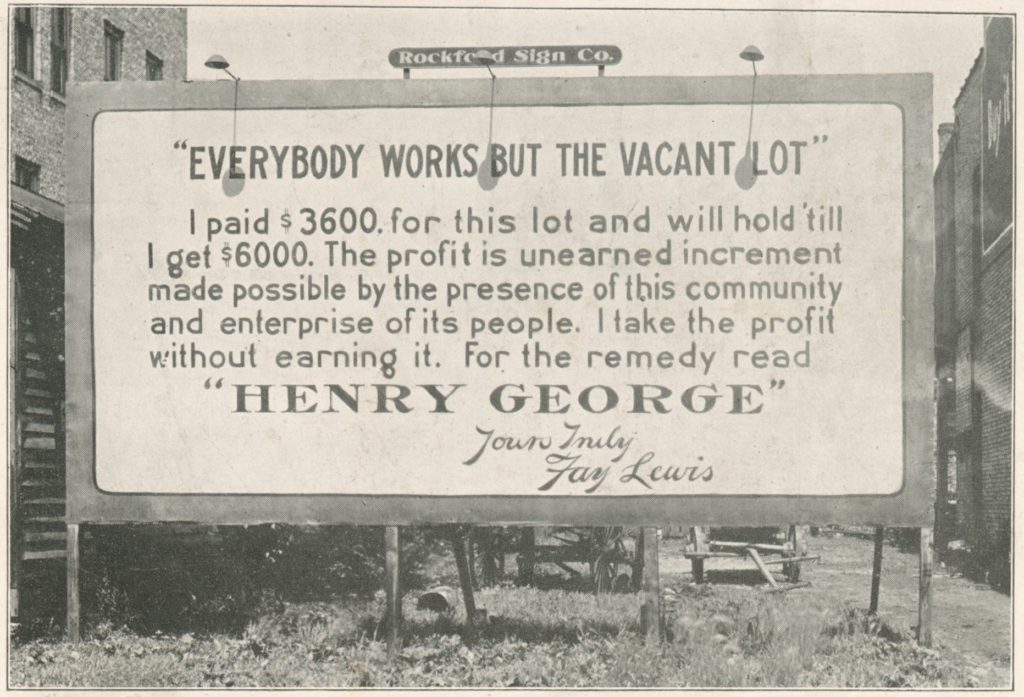Food 4 Less Closure Will Exacerbate East-West Disparities Among Long Beach Neighborhoods
Kroger’s recent decision to close two grocery stores in Long Beach, namely, Food 4 Less, located in the 90805 zip code, has deep ramifications for an already impoverished area.
8 minute read“It looks like we’re basically on our own out here,” said a 29-year-old employee at the Food 4 Less on South Street, when I asked about his opinion regarding the recent decision by the grocery chain owner Kroger Co. to close both the store where he’s employed, along with a Ralph’s on North Los Coyotes Diagonal.
The decision, the company says, was partly motivated by the Long Beach City Council’s newly passed ordinance mandating “hero pay” for some grocery workers. In the same press statement, the company also described both stores as “long-struggling” financially.
During a recent afternoon outside the store, the Food 4 Less worker, who requested that his name not be published for fear of retaliation from store management, said that employee morale was “low” due in large part to the store’s impending closure.
The City Council’s unanimous decision to pass the hero pay ordinance on Jan. 19, which stipulated a temporary 120-day, $4-an-hour pay increase for grocery workers at stores with at least 300 employees nationally, and with 15 employees per store within the city, went into effect immediately.
Upon hearing the news, the Food 4 Less employee said that he and his co-workers were “visibly happy.”
Grocery workers’ initial enthusiasm was short-lived, however, because the city’s decision was immediately challenged by the California Grocers Association (CGA), a lobbyist group for the grocery industry, which filed a lawsuit in federal court the day after the ordinance passed. A hearing for a preliminary injunction against the ordinance is scheduled for Friday.
The CGA is suing Long Beach on the grounds that the city intervened in the company’s existing collective bargaining agreement with the United Food and Commercial Workers (UFCW), the union that represents workers at Food 4 Less and Ralphs. The CGA also claims that the ordinance unfairly singles out big-chain grocers, while other businesses that employ front-line workers deemed “essential” are exempt from having to provide the extra pay.
Having lived for more than a decade in North Long Beach, until moving elsewhere in the city in 2020, I was very much familiar with making the routine 4-minute drive or 20-minute walk, depending on how I felt that particular day, to Food 4 Less, from my apartment near the store. I found both the relatively low prices and employees at the store to my liking, and became familiar on a first-name-basis with a few workers over the years. From my observation, the workers at the store are overwhelmingly Black and Latino, and it wasn’t uncommon for me to cross paths with several of them at either the Michelle Obama Library on Atlantic Avenue, or at one of the restaurants in the vicinity, leading me to believe they lived locally.
As someone who has worked several low-wage, service industry jobs, and experienced a few prolonged stints of unemployment throughout my work life, I can empathize with the workers at both the Food 4 Less and Ralphs, particularly amidst a deadly pandemic and bleak employment prospects, where systemic issues of inequality, race, and class are exacerbated.
In fact, a recent report issued by the Los Angeles County Economic Development Corporation—a non-profit whose mission is to “guide economic development and create more widely shared prosperity” found exactly that. The report read: “Los Angeles County will have an estimated 354,000 fewer living wage jobs in 2021 and greater race-based economic inequities compared to the pre-pandemic economy.”
The L.A. Times reported that both store closures will affect 200 jobs.
For anyone with even a scant understanding of how social and economic life differs throughout Long Beach’s various zip codes—helped in no part by the arrival of the coronavirus, which has been openly discussed, even by city officials—it would be fair to say that the loss of Food 4 Less in particular will likely exacerbate social and economic outcomes in an already-struggling part of the city.
Juxtaposing the closing of either store isn’t meant to let Kroger off the hook. Highlighting economic and social disparities across the city by showing how the closing of one store versus the other, is only meant to further illuminate the gross inequalities that existed prior to the pandemic, which we’ll return to shortly.
Kroger, like other corporate behemoths such as Walmart and Amazon, can more than afford to pay its employees a living wage, while still maintaining astronomical profits.
For instance, Kroger, according to a Brookings Institute study saw its net earnings double to $2 billion in the first two quarters of 2020, up from $1 billion in the same period in 2019.
Tomisin Oluwole
Coquette
Acrylic on canvas
18 x 24 inches
Click here to check out our interview with Tomisin Oluwole, a a literary and visual artist based in Long Beach.

Instead of gunking up our site with ads, we use this space to display and promote the work of local artists.
The study also revealed that Kroger made more than $2.6 billion in profits between Feb. 2 and Nov. 7 in 2020. Out of those profits, $989 million was devoted to stock buybacks, a practice that was illegal prior to rule changes by the Securities and Exchange Commission (SEC) in 1982. The rule had been in place because the practice was understood to be a ploy to tether executives’ compensation to a company’s stock price. In short, when a corporation buys back shares of its own stock, the value is transferred from shareholders to executives, not towards increased wages or benefits for workers. Making matters worse, the company routinely rewards its executives with handsome cash bonuses.
In the face of so much data, which shows the wide disparity in Kroger’s profits and executive pay counter to what its workers are paid, it was laughable to read the company’s statement announcing its lawsuit, stating that the city’s ordinance was an “attempt to pick winners and losers.”
No company, including Kroger—whose CEO Rodney McMullen was paid more than $20 million in 2019, compared to the median compensation of a company employee that year, $26,790, a ratio of 789 to 1, according to documents filed by the company with the SEC—is in any position to speak or act as an arbiter regarding so-called “winners and losers” in this context. Especially, when it stacks the deck in such a way that further calcifies wealth at the top, exploitatively at the expense of the bottom.
Ralphs, located in the 90808, sits roughly six miles away from the Food 4 Less in the 90805, but if one were to judge both zip codes by social, health, and economic measurables, etc., they may as well be worlds apart.
A 2019 Community Health Needs Assessment, conducted by the Long Beach Memorial Medical Center, helps bear out the disparities.
The more affluent East Long Beach suburb located in the 90808 enjoys the city’s highest median income ($97,500); longest life expectancy (81.2 years); lowest poverty rate (4.9%); and lowest percentage of renters who spend more than 30 percent of household income on housing (39.6%).
Residents in the area, who skew both older and white, have the city’s third least amount of COVID-19 cases (2,455) and rate of cases per 100,000 people (6,421) among the city’s 11 zip codes as of Feb. 11, according to data released by the Long Beach Department of Health and Human Services.
Conversely, on the north side in the 90805 zip code, current home to the Food 4 Less, median income is third lowest ($45,878); life expectancy is second worst (76 years); the poverty rate is third worst (22.9%); and renters who spend more than 30 percent of household income on housing (61.7%) is second worst among the 11 zip codes.
North side residents, who skew younger and have a higher concentration of Latino, Black, Asian and Pacific Islanders, live in the city’s most densely populated zip code, have by far the city’s highest rate of covid cases (12,728), along with the second worse rate of cases per 100,000 people (13,609).
In a recent local report, North Long Beach was found to have the highest disparity in coronavirus cases-to-vaccination rates.
The 90805 zip code, where the Food 4 Less is located, has the highest concentration of African American residents (20% vs. 13% city-wide), along with a high percentage of residents whose primary language is not English (25.8% vs. 18.3% city-wide). African Americans suffer the shortest life expectancy in the city, (71.5 years), one of many adverse outcomes shaped by inequalities regarding income, healthcare access, food-insecurity, and food deserts, where affordable and nutritious groceries are limited.
In fact, neighborhoods located northwest and northeast of the soon-to-be-shuttered Food 4 Less have been designated as low-income food deserts by the United States Department of Agriculture.
“You know, we’ve got COVID-19 to deal with, barely making ends meet, rent due, and now we’ve all got to worry about getting new jobs in a few months,” said the Food 4 Less employee, who identifies as African American.
“We do all the work, we sweat, we’re taking risks with our health and lives, but the company makes all of the decisions and money,” he added. “The whole thing’s just not fair when you think about it. There needs to be more fairness in this country. They (the company) shouldn’t just be able to play with people’s lives by closing stores whenever they want, all because they don’t want to pay fairly for hard work.”


 FuriusMic@gmail.com
FuriusMic@gmail.com




